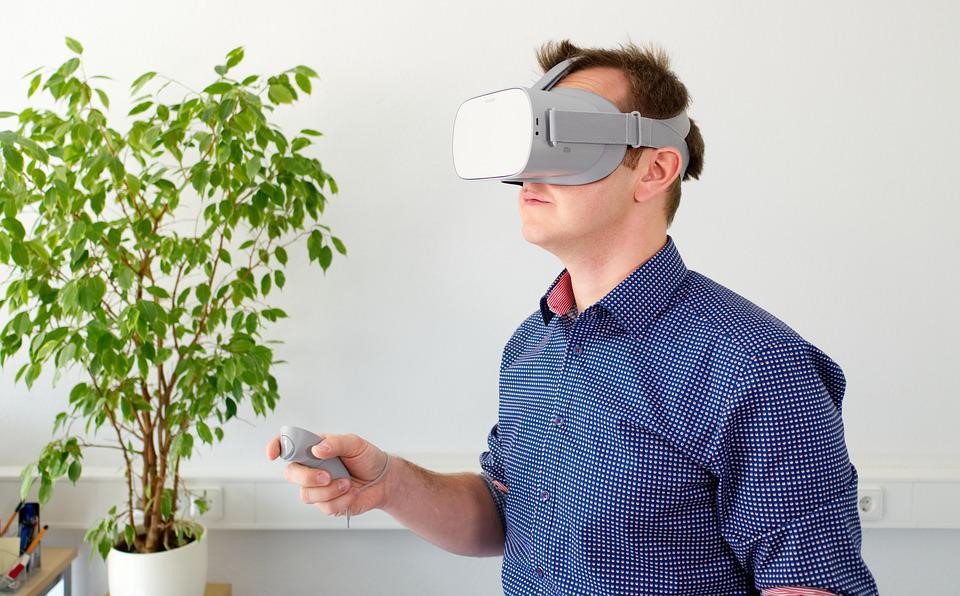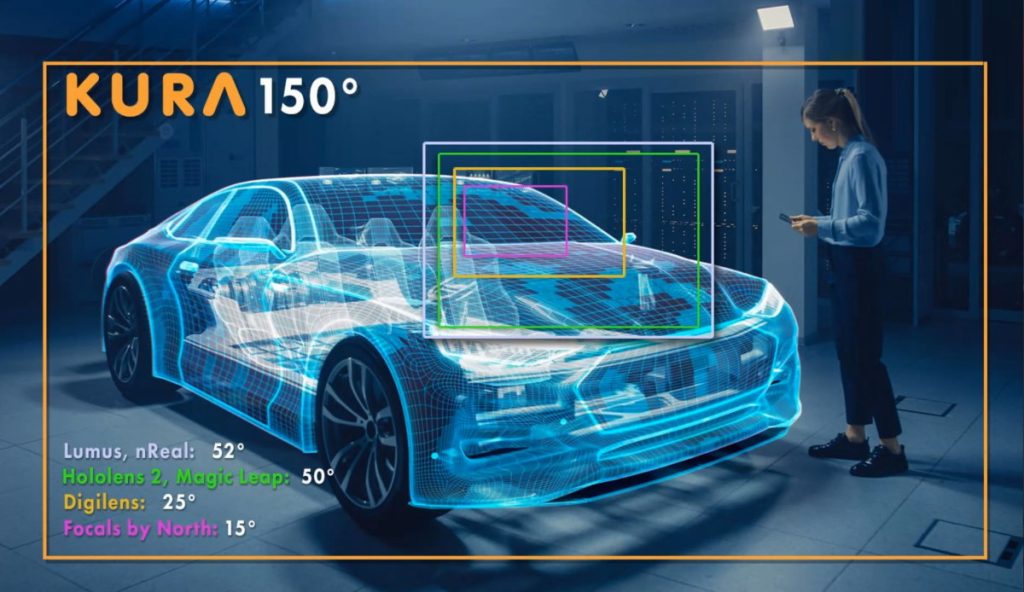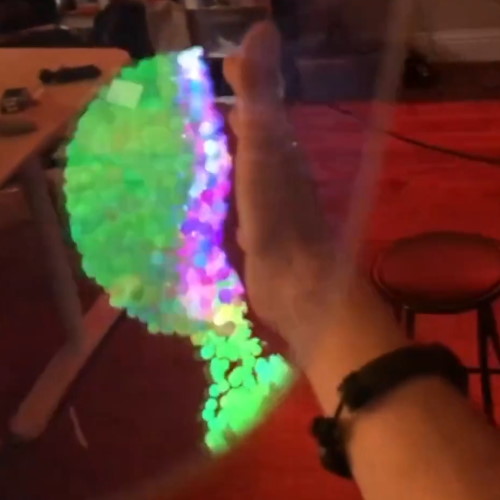I was recently introduced to what may be the future (or one future in this slice of the multiverse) of mixed-reality headsets. As a result, I’m currently squirming in my seat squealing in excitement. Now that I come to think about it, this is my usual modus operandi, so I just dispatched the butler to retrieve an appropriate pair of trousers.
If I’ve said it once, I’ve said it a thousand times (but I don’t mind saying it again): I think that the combination of augmented reality (AR) and artificial intelligence (AI) are going to radically change the way in which we communicate and interact with our systems, the world writ large, and each other.
As I’ve also mentioned on occasion, AR is just one aspect of the reality-virtuality continuum. At one end of the continuum (the boring end or the exciting end, depending on your point of view) we have the unadorned real world, which we might call physical reality (PT). At the other end of the continuum, we have the virtual world and virtual reality (VR) in which everything is computer generated.

The reality-virtuality continuum (Image source: Max Maxfield)
AR refers to an interactive experience of a real-world environment in which the objects that reside in the real world are enhanced by computer-generated perceptual information, sometimes across multiple sensory modalities, including visual (text and graphics), auditory, haptic, somatosensory, and olfactory.
It’s unfortunate that the general public has picked up the AR term and is running with it, because AR is only a piece of the puzzle. Its counterpart is diminished reality (DR) in which elements are reduced or removed from the real-world scene. In some cases, this could be beneficial, such as fading down background noise and clarifying the words of the person with whom you are conversing at a cocktail party, for example. Another possibility is converting most of the scene you are looking at into grayscale (or blurring it) leaving only objects of interest in color (or in sharp focus), thereby helping you to spot your family and friends in a crowd, for example. Of course, there could be a downside, like removing homeless people from the scene you are seeing (or changing them into pots of colorful plants). And then there’s the possibility of hackers taking control of your reality such that you don’t perceive things like posts or buildings or holes in the ground until… you do.
There’s also something called augmented virtuality (AV). As I wrote in my What the FAQ are VR, MR, AR, DR, AV, and HR? blog, “As opposed to AR, in which objects and scenes in the real world are augmented with computer-generated information, AV refers to augmenting virtual environments with real-world objects or people.”
The term mixed reality (MR) is used as an umbrella term to embrace AR, DR, AV, and VR. An alternative term used by some is extended reality (XR). The scary cumulation of all this is the potential for a future full of hyper reality (HR), which — as we see in this video — may be thought of as MR/XR on steroids.
This is well worth watching multiple times. Every time I watch it, I see something new. One of the more poignant scenes to me is when the lead character is strolling through a colorful, brightly lit supermarket when her HR system is attacked and forced to reboot, and we get to see what her surroundings really look like.
As an aside, did you ever read The Joy Makers by James Gunn? This was published originally in magazine form in 1955, and then gathered into a novel in 1961. Reading it now, it’s amazing how prescient Mr. Gunn was with respect to where we are today and where we may be heading in the future. Part III, for example, is reminiscent of The Matrix, with most people locked in cells floating in amniotic fluids living in a virtual reality generated by a central computer that’s indistinguishable from the real thing (the reality, not the computer). We think our hero, D’glas, triumphs over the central computer, all the way up to the point where he himself starts to wonder if he’s still in the real world, or if he’s in a virtual world that’s been created to make him think he won (my head hurts), but we digress…
One of the things we are going to need to fully appreciate the wonders of MR is an appropriate viewing apparatus. Unfortunately, existing offerings typically suffer from a combination of negative factors as illustrated below:

Problems with existing headsets include (from left to right) small field-of-view, low transparency, low brightness,
and being huge and heavy (Image source: Kura)
These negative factors include offering only a small field-of-view (which results in unnatural clipping, limits use for large models, and causes eyestrain and brain-strain), low transparency (which is unsafe because it limits the wearer’s awareness of their surroundings and degrades their use in social situations because it means no eye contact), low brightness (which causes color artifacting, makes them unusable outdoors, and also limits their use in many indoor situations), and the fact that they are huge and heavy (which causes neck strain and renders them unusable after 30+ minutes).
To be honest, for quite some time I thought we would be obliged to wander our way through the world sporting clunky Oculus Quest-esque headsets.

Would you wear this headset out in public? (Image source: Pixabay)
Now, your knee-jerk reaction may be something along the lines of, “You’d never catch me strutting the supermarket aisles wearing one of these!” And, once again, as I’ve said before, I’m going to opine that the first time you see someone wearing something like this in public you’ll say “they look silly” to yourself, but should it come to pass that 80% of the people you see ambling around are wearing this type of headset, it wouldn’t take long before you start thinking “I wonder what wonders they are seeing that I’m not?”
On the other hand… given a choice, I’m sure we would all like something smaller, lighter, less obtrusive, and — dare I say it? (yes I do) — more stylish. All of which leads me to the fact that I was just talking to the amazing guys and gals at Kura Technologies. These folks are poised to drive the next wave of innovation for the meta-sphere with AR glasses that are truly meta-droolworthy.

They may not be the world’s first, but they may well be the world’s best AR glasses (Image source: Kura)
The first surprising thing about these little beauties is that they are not dissimilar to the glasses I’m currently wearing, proving once again (as if we needed proof) that I’m a trend-setter and leader of fashion.
So, what sets these glasses apart from their peers and lets them stand proud in the crowd? Well, in addition to being light-weight and presented in an eyeglass formfactor, they offer a 150° field-of-view with 95% transparency. Moreover, the real clincher is that they provide high-brightness, high-contrast, 8K x 6K per eye resolution with an unlimited depth of field. (Stop! Re-read that last sentence. 8K x 6K PER EYE! That’s true 8K, which is about 50M pixels per eye! Now you know why I’m drooling! It’s also why I’m using so many exclamation marks!)

Illustration of Kura’s 150° field-of-view with other AR glasses solutions
(Image source: Kura)
Just today, if everything was up and running the way we would like it to be, AR could satisfy humongous market needs, like telepresence ($500 billion), training ($200 billion), entertainment ($20 billion), logistics ($15 billion), medical ($10 billion), and service ($10 billion), to name but a few. What we’re talking about here is a total market of around $1.5 trillion just to cover the stuff we are thinking of today. Goodness only knows what additional applications and markets and use cases will emerge once we actually have this technology at our fingertips.
The folks at Kura say they are on a mission to enable a broad adoption of wearable AR with superior technology that will change the way we all work, play, learn, and connect with each other. But these awesome AR glasses — which will work with other companies’ technologies in the AR ecosphere — are only the first step. Kura’s long-term goal (if they don’t get snapped up by a larger company in the meta-meantime) is to build a platform for both consumers and enterprises that includes sensors, AI chips and algorithms, operating systems… all the way to brain-machine interfaces.
The chaps and chapesses at Kura have just received their first silicon samples and are about to launch a broad push to enter the market. I don’t know about you, but I for one cannot wait to take a peek at the world through my own pair of Kura AR glasses. What say you? Do you have any thoughts you’d care to share?






Hi Max, can you clarify 8K per eye? Do you mean 8000 pixels per eye? That’s, like, 120 x 66 pixels which doesn’t sound that great to me, or am I missing something here?
Sorry John, I assumed you would understand what I was trying to convey. Now I feel like a fool (but where are we going to find one at this time of the day?) (The old jokes are the best ones 🙂
When you see an advert for a 4K Television, do you assume a resolution of 100 x 40 pixels? Do you seriously think I would be drooling (or even bothering to write a column) about VR glasses with a resolution of 120 x 66 pixels? I wouldn’t even get out of bed to laugh at such a resolution LOL
NO! I cry, 1,000 times no! What we are talking about here with Kura is 8K x 6K per eye (true 8K), which is about 50M pixels per eye! (I just “tweaked’ my column to reflect this.) So, is this starting to sound just a little bit great now? 🙂